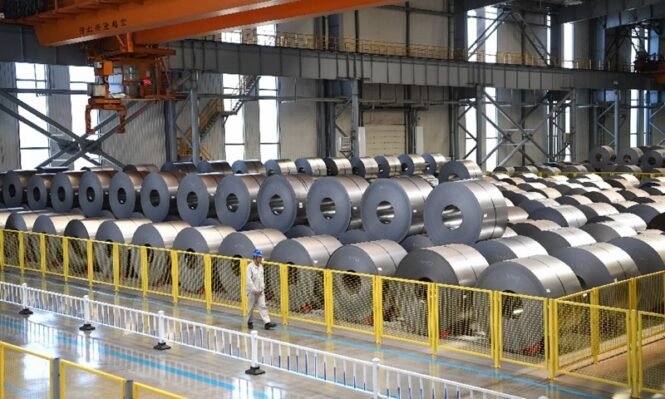November saw a recovery from October’s low in the spread between the prices of raw materials and European (EU) hot-rolled coil (HRC) steel, thanks to increased spot steel prices and decreased coking coal costs.
A stronger euro helped costs while HRC (hot-rolled coil) prices recovered in November from a 3 year low to relieve pressure on steel margins. According to an S&P Global Commodity Insights analysis published on December 7.
Impact of Euro Strength on Steel Margins
S&P Global estimates show that the HRC (hot-rolled coil) steel-to-raw material spot spread in Northwest Europe widened from Eur261/mt in October to an average of approximately Eur306/mt ($331/mt) in November.
The breakeven point for a regional European steel mill could be between EUR 250 and EUR 300/mt, depending on the particular site and cost structures.
The euro appreciated from October to November, averaging $1.08 against the United States dollar. Which reduced the cost of importing raw materials denominated in dollars.
Northwest Europe HRC spread was estimated by Platts, a division of S&P Global Commodity Insights, to have averaged Eur345/mt in Q3, lower from Eur470/mt in Q2 and Eur421/mt in Q1.
Northwest Europe HRC spreads this year are still smaller than the Eur520/mt average in 2022 and the Eur636/mt average in 2021. When steel prices and spot demand were stronger, despite the recovery in November.
Challenges in EU Steel Industry: Production Impact and Pig Iron Output
According to the most recent data available, the EU steel industry’s pig iron output in October was 10.5% lower than the previous year. Analysis based on data from the World Steel Association shows that stoppages at blast furnaces undergoing maintenance and lower demand continue to impact European production.
S&P Global monitored inputs using primary steel feedstock price references. Such as a basket of high-grade fine-grade iron ore, lump, and pellets that are commonly used by local blast furnaces in France, Germany, and other nearby EU markets.
According to S&P Global data, Platts evaluated HRC prices at an average of Eur655.45/mt ex-works Ruhr in November, an increase of 6.9% from October. And at Eur680/mt ex-works Ruhr on December 6.
China’s import prices of iron ore, Which are use in international agreements, rose 9.7 percent in November to $130.46/dry mt CFR China for the benchmark Platts IODEX 62% Fe fines.
The average spread between 62 percent Fe or 65 percent Fe fines increased to $11.20/dmt in November from $9.01/dmt in the previous month.
The average spot lump ore premium in China decreased to 21.74 cents/dmtu in November. For the 62.5 percent Fe grade, the lump premium was approximately $13.59/dmt, which was a 6.4 percent decrease from October.
Impact of Euro Strength on Steel Margins: Insights from S&P Global Analysis
According to S&P Global data, Platts evaluated the Atlantic blast furnace agreement pellet premium in November at $36.50/dmt, which was a $1.50/dmt decrease from October. The assessment was based on premiums applied to 62 percent Fe fines index terms.
In order to adjust pricing terms with spreads, the assessed premium tracked subsequent settlements and price indications for Q4 agreement premiums.
Due to transactions at lower prices, coking coal prices on a delivered net forward basis into Rotterdam fell 9.7 percent in November to $336.53/mt CFR NW Europe.
This came after earlier, more vigorous restocking, when demand in India began to decline.
The bulk of HRC produced in Europe comes from integrated mills that use blast furnaces and iron ore, as opposed to electric arc furnaces, which usually produce HRC with lower emissions.
Flat steel is produce using EAFs at the Arvedi plant in Italy and the Sestao plant of ArcelorMittal in Spain.
Limited EAF-based emissions are additionally available in smaller volumes from Salzgitter and SSAB.
In November, delivered regional prices for shredded scrap in northern Europe increased by 1.5 percent to Eur345/mt.
The Europe HRC-to-raw-material pricing spreads provided by S&P Global are illustrative operating margins; however, they do not take into consideration the costs of inland logistics, electricity, natural gas, or other inputs used in blast furnaces and steel production, such as ferroalloys, anodes, and refractories. Additionally, operating expenses for the coke and sintering plants are not covered.
